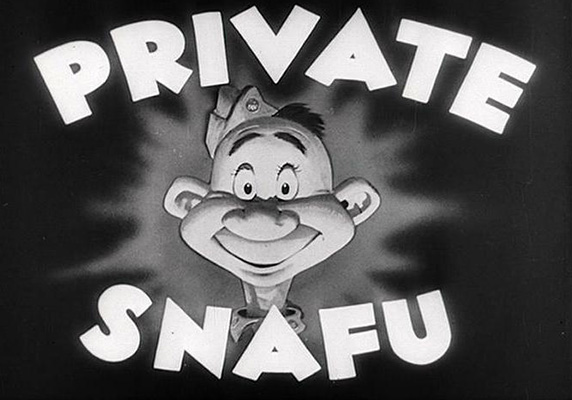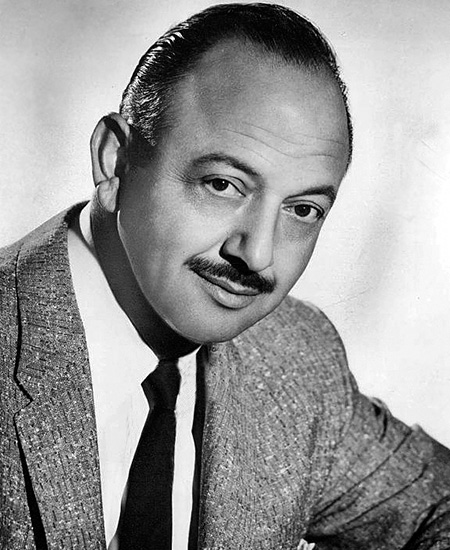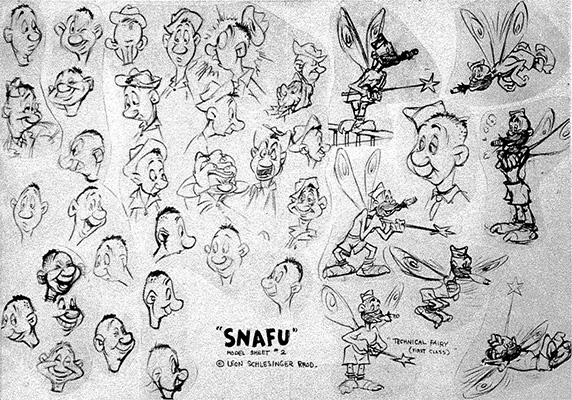From 1943-46, Private Snafu wasn’t a cartoon character that you would find alongside the likes of Bugs Bunny and other staples of Warner Bros.’ cartoon universe. Though he had a corral of prominent Hollywood animators and voice talent behind him, Private Snafu did not just inform service personnel about a range of subjects—the animation itself series was classified.
The name of Private Snafu came from a rather censored version of the unofficial military acronym SNAFU, which in the case of the video series meant "Situation Normal, All ... All Fouled Up!". A person’s imagination can interpret what the original acronym was. The series of black-and-white American instructional cartoon shorts were usually ironic and humorous in their tone (featuring now outdated and stereotypical representations of Axis Forces). Produced between 1943 and 1945 during World War II, they focused on security, hygiene, spotting booby traps, and generally educating and keeping morale up.
Opening card of the US army WWII short animated films "Private Snafu". Author: Chuck Jones

Chuck Jones was responsible for directing the series. A veteran and giant of the animation industry, he was responsible for bringing memorable shows like Looney Toons to air, as well as directing iconic characters like Bugs Bunny and Daffy Duck, to name but a few. Providing the voice of Private Snafu was Mel Blanc. Another legend of the industry, Blanc had voiced Bugs Bunny, Daffy Duck, Porky Pig, Tweety Bird, Sylvester the Cat, and many, many more. With instantly recognizable talent at the helm, the government brought a powerhouse of talent on board.
The character of Private Snafu was created by director Frank Capra, chairman of the U.S. Army Air Force First Motion Picture Unit. This unit was the primary film production unit of the US Army Air Forces (USAAF) during World War II. Of special note, it was the first military unit made up entirely of film industry professionals. In its span, it produced over 400 propaganda videos.
Mel Blanc: “The Man of 100 voices”. Credit to Gene Hester

The animated shorts were mostly written by Theodor "Dr. Seuss" Geisel, Philip D. Eastman, and Munro Leaf, meaning there was a real wealth of talent at every turn. While the United States Army let Walt Disney have a chance at creating the cartoons, Warner Bros. underbid Disney by two-thirds and won.
Aside from the aforementioned ways to educate viewers, the Private Snafu cartoons were a way to help enlisted men with weak literacy skills learn. The Army also supplied them with supplementary comic books. In a way that may seem a little antiquated now, both the show and books focused on simple language, song and rhyme, as well as racy illustrations, mild profanity and moralizing. The nature of Private Snafu was to make costly mistakes so, in theory, the soldiers would learn not to.
Sketches of Private Snafu and Technical Fairy. Credit to Nightlfight.com

In terms of content, the team had a lot of leeway. Because the shorts did not need approval from the Production Code Administration (a body which enforced the Motion Picture Production Code), the War Department only had to approve Private Snafu’s storyboards. The main focus of the team was to make the shows entertaining and play up to a number of “safe” ideas for wartime media.
So, in Private Snafu: Spies (featured below), we have the titular character heading off to war. In the short, Private Snafu is stalked by caricatures of Axis forces—German, Italian, and Japanese spies. He proceeds to inadvertently let everyone know, and this information makes its way into enemy hands. In Booby Traps, he’s blown up by a bomb hidden inside a piano, in The Goldbrick, he’s run over by an enemy tank. It never really ends well for Private Snafu.
Private Snafu: Spies. Credit to Jeff Quitney and U.S. Government
Private Snafu has another character named Technical Fairy, First Class. The character is presented as a rude, grizzled, small G.I. who chomps on a cigar. Private Snafu typically interacts with the fairy to get out of his duty—skipping protocol, and generally not doing his job well. Again, this does not end well for the character, but he does learn valuable lessons. However, as the series progressed, Private Snafu gradually became more competent.
Not only was the Private Snafu series produced during the Golden Age of Warner Bros. animation (with rising and established giants involved), the work impacted children’s literature. The experiences of Theodor Geisel, Philip D. Eastman, and Munro Leaf contributed to their post-war books. Including simple themes and language, their works promoted personal responsibility, conservation, and multiculturalism.